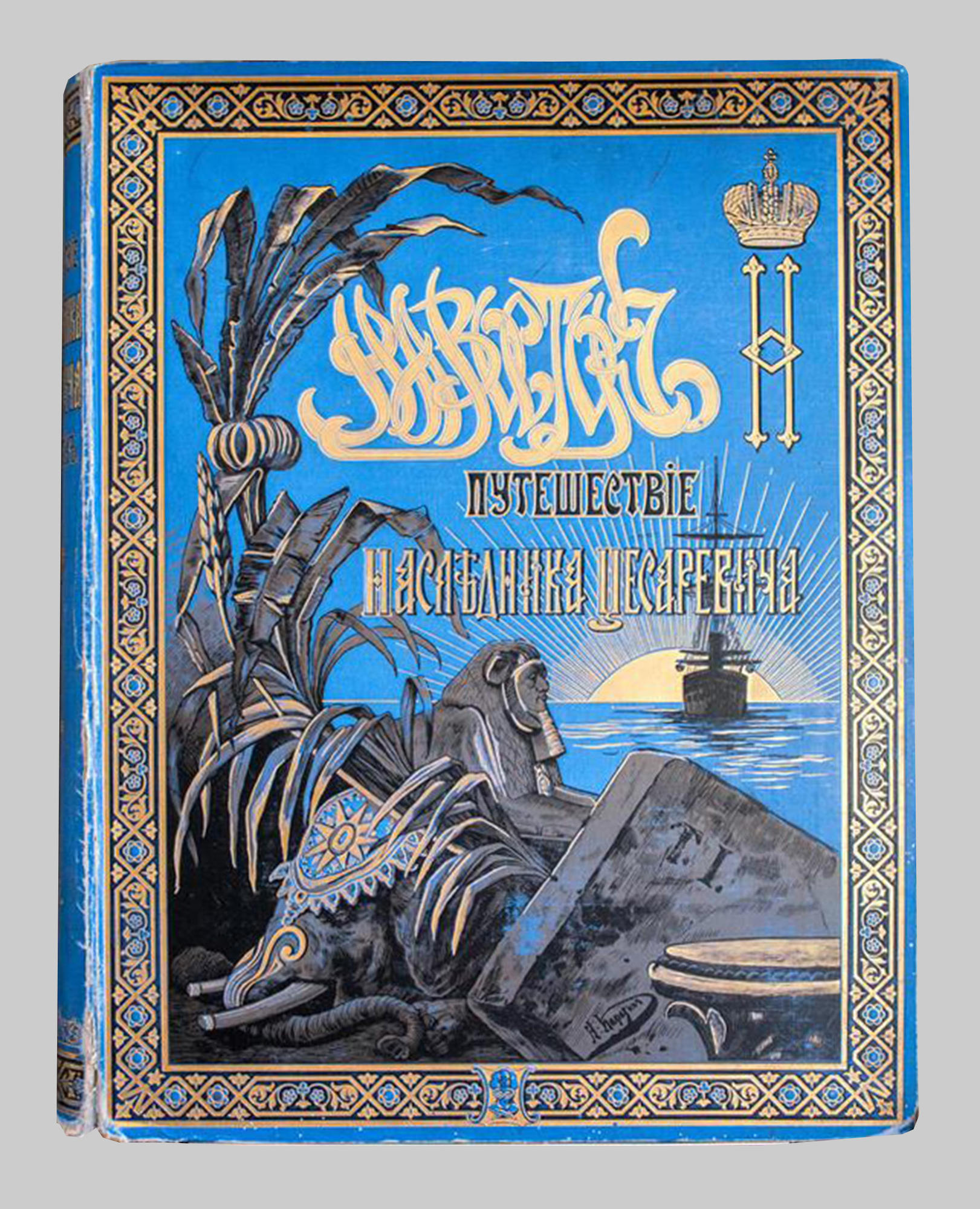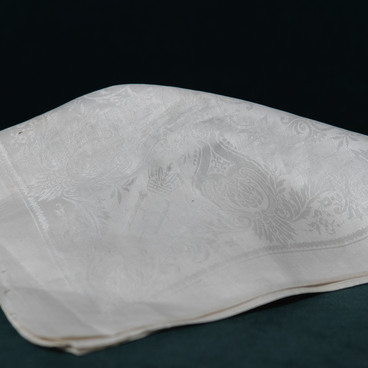Three volumes of the book Travels in the East of Nicholas II were issued in 1893, 1895 and 1897. The publication was focused on the tour of the future emperor Nicholas II, at that time he was still a Tsesarevich (crown prince), a successor to the throne.
Travels about Russia and other countries were traditional for the Romanov family. They completed the education of heirs. But while Tsesareviches usually travelled about Europe, Nicholas Alexandrovich went eastwards in 1890. The bigger part of the voyage from Egypt to Japan was made by sea. The Tsesarevich came back via the Far East and Siberia.
The journey lasted from November 4, 1890 to August 16, 1891. The cruiser Pamyat Azova (Memory of Azov) on which the Tsesarevich travelled by sea visited Greece, Egypt, India, Singapore, Siam (present day Thailand), China and Japan. Japan’s government received him with special attention: because of the fact that the country was long isolated from the rest of the world, Nicholas Alexandrovich became the first heir to a foreign throne to stay in its territory.
The future emperor was accompanied by Prince Esper Ukhtomsky, a historian, servant of the Ministry of Foreign Affairs. In the three-volume edition of Travels in the East of Nicholas II he described the main events of the trip, his own impressions and discussions of his companions. It also comprised historical and ethnographical information about various peoples, remarks about religions of countries that the expedition party visited.
In the third volume Ukhtomsky described in detail the expedition party’s visit to Tobolsk. The Tsesarevich arrived in the city in July 1891 on board the steamship Nicholas. He looked over the monument to Ermak, the conqueror of Siberia, visited the Cathedral of St.Sophia.
Almost immediately after the publication the book was translated into English, French and German. The text was illustrated by Nikolay Karazin, a battle painter, writer and traveller. He became the first of the Russian painters to work by the same method as the famous Gustave Dore: right on the wooden panel he painted a picture with brushes of various thickness.
The book Travels in the East of Nicholas II is a model of the state-of-the art printing industry of the 19th industry. In designing it the publisher used geometric and floral ornaments, various stamp printing techniques: press gilding and blind printing.
Travels about Russia and other countries were traditional for the Romanov family. They completed the education of heirs. But while Tsesareviches usually travelled about Europe, Nicholas Alexandrovich went eastwards in 1890. The bigger part of the voyage from Egypt to Japan was made by sea. The Tsesarevich came back via the Far East and Siberia.
The journey lasted from November 4, 1890 to August 16, 1891. The cruiser Pamyat Azova (Memory of Azov) on which the Tsesarevich travelled by sea visited Greece, Egypt, India, Singapore, Siam (present day Thailand), China and Japan. Japan’s government received him with special attention: because of the fact that the country was long isolated from the rest of the world, Nicholas Alexandrovich became the first heir to a foreign throne to stay in its territory.
The future emperor was accompanied by Prince Esper Ukhtomsky, a historian, servant of the Ministry of Foreign Affairs. In the three-volume edition of Travels in the East of Nicholas II he described the main events of the trip, his own impressions and discussions of his companions. It also comprised historical and ethnographical information about various peoples, remarks about religions of countries that the expedition party visited.
In the third volume Ukhtomsky described in detail the expedition party’s visit to Tobolsk. The Tsesarevich arrived in the city in July 1891 on board the steamship Nicholas. He looked over the monument to Ermak, the conqueror of Siberia, visited the Cathedral of St.Sophia.
Almost immediately after the publication the book was translated into English, French and German. The text was illustrated by Nikolay Karazin, a battle painter, writer and traveller. He became the first of the Russian painters to work by the same method as the famous Gustave Dore: right on the wooden panel he painted a picture with brushes of various thickness.
The book Travels in the East of Nicholas II is a model of the state-of-the art printing industry of the 19th industry. In designing it the publisher used geometric and floral ornaments, various stamp printing techniques: press gilding and blind printing.



